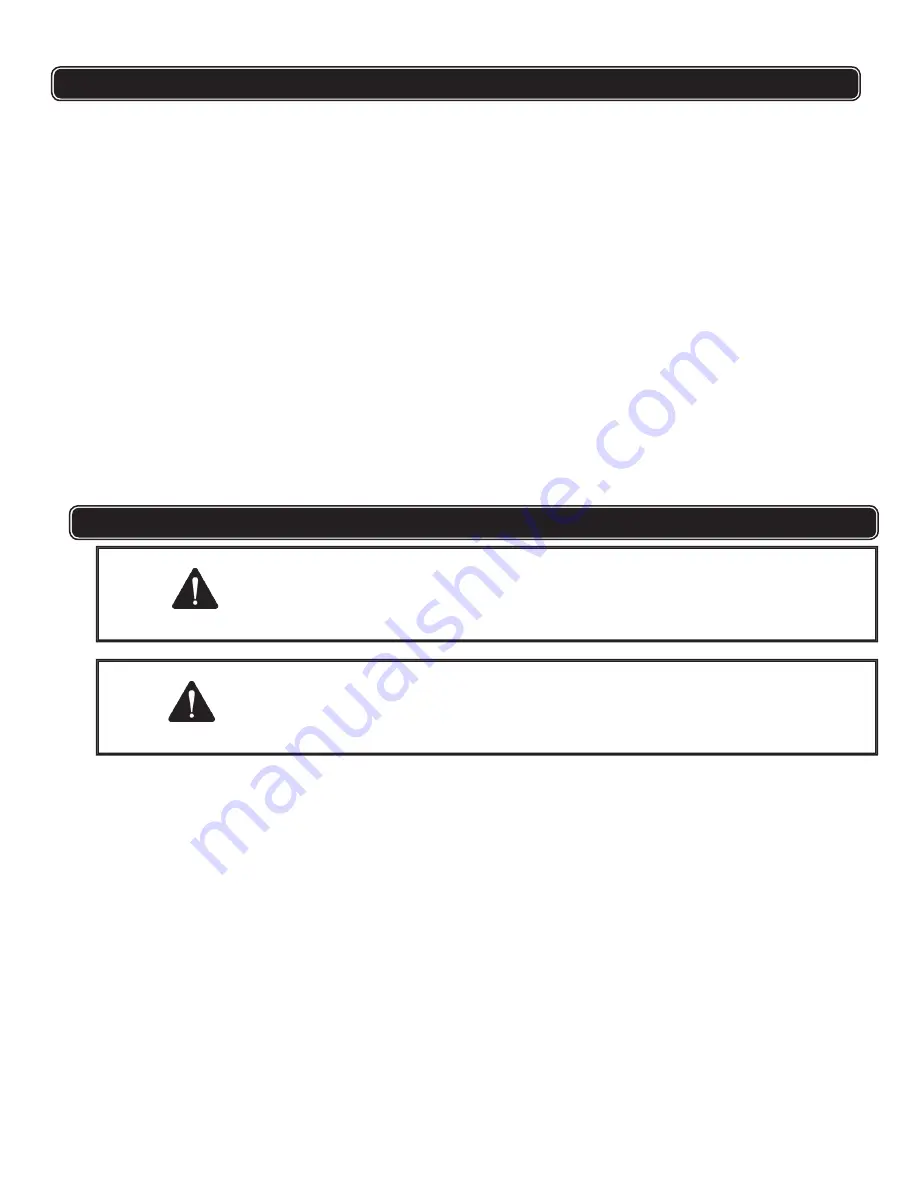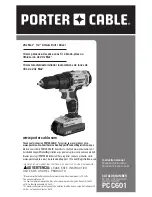
7
1. When drilling in wood, the best results are obtained with a screw guide. The
screw guide makes drilling easier by pulling the bit into the workpiece.
2. Holes in the wood can be made with the same twist drill bits used for metal.
These bits may overheat unless pulled out frequently to clear the chips from
the fl utes. However, do not use the twist drill bits meant for wood when drill-
ing in metal.
3. For large holes, use the low speed wood bits.
4. Use a “back-up” block of wood for work that can splinter, such as thin materi-
als.
OPERATING PROCEDURES
DRILLING IN WOOD
5. You will drill a cleaner hole if you ease up on the pressure just before the bit
breaks through the wood. Then complete the hole from the back side.
1. There are two rules for drilling hard materials. First, the harder the material,
the greater the pressure you need to apply to the tool. Second, the harder the
material, the slower the speed.
2. Lubricate the tip of the bit occasionally with cutting oil except when drilling
soft metal such as aluminum, copper or cast iron.
3. To prevent the bit from slipping when starting a hole, make an indentation
with a center-punch and hammer at the point to be drilled. Place the point of
the bit in the indentation and start drilling.
WARNING!
Do not attempt to make any adjustments while the tool is in opera-
tion. Disconnecting the tool from the power source will prevent accidental start-
ing which can cause serious injury.
CAUTION!
Use only the accessories that are recommended by the manufactur-
er for your model. Accessories that may be suitable for one tool may be hazard-
ous when used on another tool.
DRILLING IN METAL
MAINTENANCE
1. Clean out any accumulated dust. Ventilated openings and switch levers must
be kept clean and free of foreign matter. Do not attempt to clean by inserting
pointed objects into openings.
2. Avoid using solvents when cleaning plastic parts. Most plastics are suscep-
tible to damage from commercial solvents and may be damaged by their use.
Use clean cloths to remove dirt, carbon dust, etc.
3. Do not allow petroleum based products to come into contact with the plastic
parts as they contain chemicals that can damage, weaken or destroy plastic.
4. Only a qualifi ed service professional should repair the tool.



























